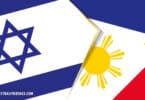In 1849, Governor-General Narciso Clavería issued a decree that would have a lasting impact on Filipino identity: the Clavería Decree. This decree required Filipino families’ systematic adoption of Spanish surnames, fundamentally changing how names were recorded and inherited. Understanding the Clavería Decree is crucial for genealogists to trace Filipino ancestry within the Philippines and among those who have migrated worldwide.
The Historical Context of the Clavería Decree
Before the Clavería Decree, the use of surnames in the Philippines was inconsistent. Many Filipinos were identified by single names, often tied to their locality, occupation, or physical characteristics. This made it difficult for colonial authorities to keep track of the population, leading to confusion in tax collection, legal matters, and census-taking.
Governor-General Clavería’s solution was to standardize surnames across the archipelago. He introduced a list of approved surnames, derived from Spanish, indigenous, and religious sources, which were then distributed among families. Each town or province was assigned a specific set of surnames, creating a uniform system that could be more easily managed by the colonial government.
The Impact on Filipino Genealogy:
The Clavería Decree significantly altered the way Filipinos identified themselves, creating a structured system that genealogists rely on today. However, this decree also introduced challenges, as many families adopted entirely new surnames, disconnecting them from their ancestral names and, in some cases, their heritage.
Tracing Ancestry Through Surnames: Challenges and Opportunities
For genealogists, the Clavería Decree presents both opportunities and challenges. On one hand, the standardized surnames can make it easier to trace family lines, as the records became more consistent after 1849. On the other hand, the sudden change in surnames can obscure earlier family history, making it difficult to connect pre-Clavería ancestors with their descendants.
Key Points for Research:
1. Understanding the Origin of Your Surname:
• Researching the origin of your family’s surname is an essential first step. Knowing whether your surname was one of those assigned by the Clavería Decree or if it has earlier origins can help guide your research.
• Many surnames assigned under the Clavería Decree have specific meanings or are tied to particular regions in Spain or the Philippines. Exploring these meanings can offer clues about your family’s history.
2. Connecting Pre-Clavería and Post-Clavería Records:
• One of the biggest challenges is linking ancestors who lived before 1849 with those after the decree. To do this, focus on other identifiers in records, such as locations, occupations, or family connections, that can help bridge the gap between different surnames.
3. Exploring Church Records and Civil Registrations:
• Church records often provide details that can help connect families across the Clavería divide. Baptismal, marriage, and burial records may include information about parents or grandparents, offering a way to trace lineage despite changes in surnames.
• Civil registrations, particularly those that began during the American period, can also help reinforce connections by providing additional context and confirming family relationships.Recapping Key Resources for Filipino Genealogy
Throughout this series, we’ve explored various aspects of Filipino genealogy, from tracing indigenous roots to navigating archives after natural disasters. The Clavería Decree ties into many of these topics, as it fundamentally shaped the way records were kept and families were identified in the Philippines. Here’s a quick recap of the key resources and articles that can help you in your research:
1. Tracing Ethnic Roots: Understanding the diverse origins of the Filipino people, including indigenous groups and Chinese influences, can provide context for your surname research.
2. Colonial Records: The Spanish and American periods introduced extensive record-keeping practices that are vital for genealogical research. Church records and civil registrations are particularly important.
3. Navigating Archives: Whether you’re dealing with the impact of natural disasters or simply accessing old records, knowing where to look and how to search efficiently is key to successful research.By revisiting these resources, you can piece together a more complete picture of your family’s history, even when dealing with the complexities introduced by the Clavería Decree.
Global Connections: Filipino Migration and Surnames
The influence of the Clavería Decree extends beyond the Philippines, affecting Filipino communities worldwide. As Filipinos migrated to other countries, they brought their surnames with them, creating connections between Filipino diaspora communities and their roots in the archipelago.
Researching Filipino Ancestry Abroad:
1. Connecting with Diaspora Records:
• Many countries with significant Filipino populations, such as the United States, Canada, and Australia, have archives and records that can help trace Filipino ancestry. Immigration records, naturalization papers, and census data are particularly useful.
• Online databases like Ancestry.com and FamilySearch.org often include records from these countries, providing a way to connect Filipino surnames across continents.
2. Engaging with Filipino Communities:
• Filipino diaspora communities often have organizations dedicated to preserving and celebrating Filipino heritage. These groups can be valuable resources for genealogists, offering access to records, oral histories, and cultural knowledge.
3. Understanding the Global Spread of Surnames:
• The Clavería Decree’s impact on surnames means that certain names may be found in Filipino communities worldwide. Understanding the regional origins of these surnames within the Philippines can help connect diaspora families to their roots.The Legacy of the Clavería Decree in Filipino Genealogy
The Clavería Decree is a cornerstone of Filipino genealogy, shaping how families were identified and recorded from the mid-19th century onward. While it presents challenges for tracing ancestry, especially before 1849, it also offers opportunities for genealogists to explore their roots with a clearer understanding of the historical context.
By combining knowledge of the Clavería Decree with the resources and strategies discussed throughout this series, you can confidently navigate Filipino genealogy’s complexities. Whether you’re researching within the Philippines or exploring connections across the globe, the legacy of the Clavería Decree is a key piece of the puzzle in understanding your family’s history.
Read More:
“The Catalogo, Narciso Claveria, and Thoughts on Filipino Surnames” – This book provides a deeper look into the Clavería decree on surnames, comprehensively examining its impact on Filipino identity and genealogical research.






